BATON PASSEPISODE 01
ON-TIME ARRIVAL
SIGNIFIES QUALITY
Customers use aircraft for various purposes, such as for business or holidays or to visit their hometown. One thing in common among all customers is that they use aircraft as a means of transport to reach their destination according to schedule.
Needless to say, our mission as an airline is to transport them safely to their destinations. But we also feel that we have the important mission of operating on time to ensure that we do not affect the customers' plans. This is also a basic factor of quality, which forms the foundation of our services. In other words, pursuing on-time operations builds the foundation for providing unparalleled service, which is our ultimate goal.
Japan has four distinct seasons; therefore, the operational environment changes significantly depending on the weather such as snow and typhoons. To maintain on-time operations, we continuously implement various measures to respond to the ever-changing operational environment, never neglecting them even if they are tedious.
We will continue to work hard to provide customers with unparalleled service through on-time operations.
-

SCENE01
RESERVATIONS TO THE DAY
BEFORE DEPARTURE -
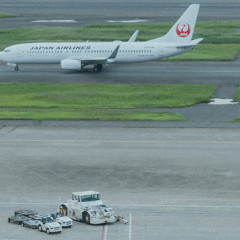
SCENE02
THE DAY OF DEPARTURE
TO BOARDING TIME -

SCENE03
AFTER DEPARTURE, CATCHING
CONNECTING FLIGHTS
SCENE 01
RESERVATIONS TO THE DAY
BEFORE DEPARTURE
Providing customers
with the finest personalized service
Sales and
Reservations
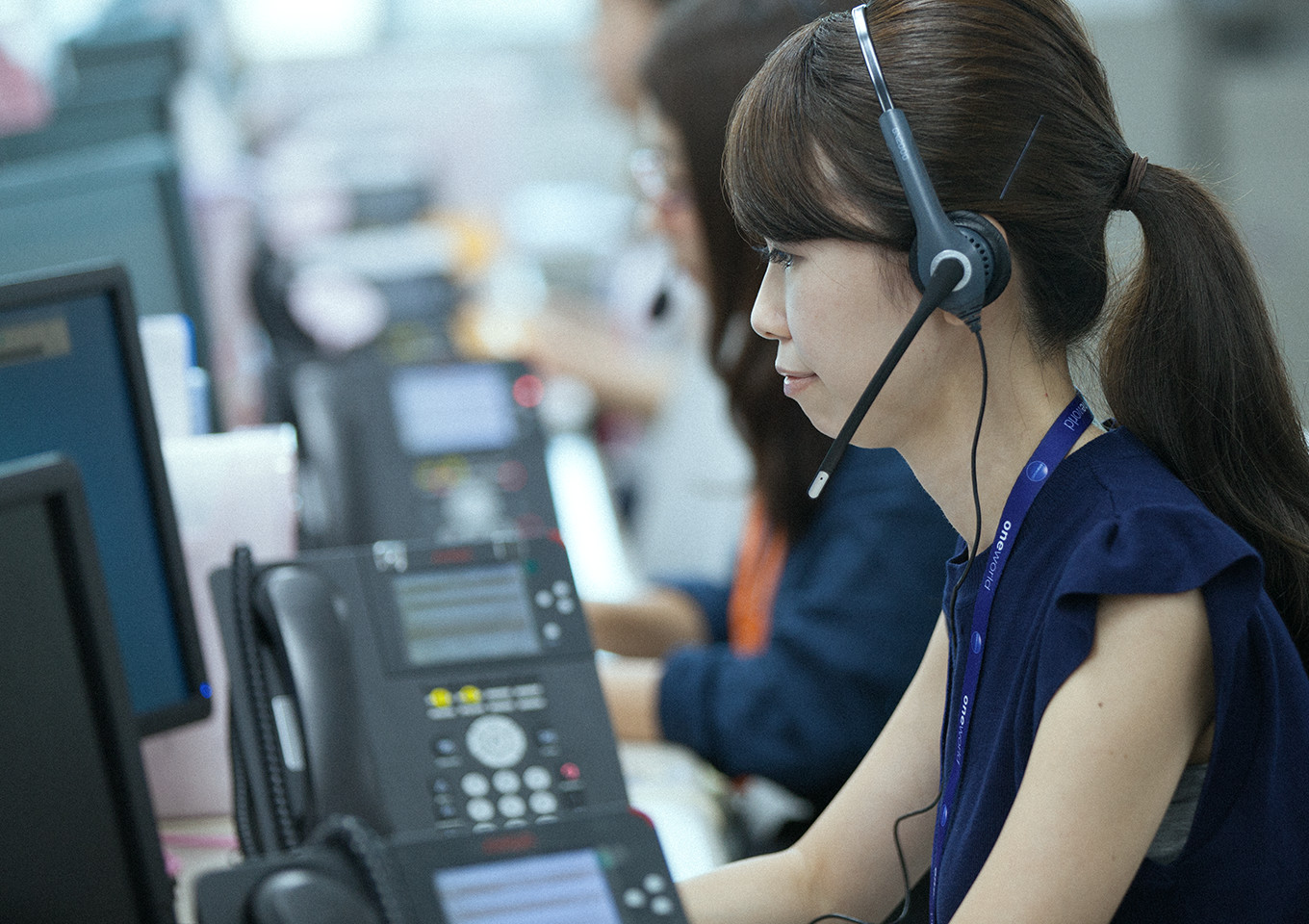
Call Centers
We keep in mind to check conditions at the airport before providing information, as conditions change depending on the time or season. For example, for customers who will use the airport when check-in counters, baggage checkpoints, parking lots, etc. are crowded, we explain what they could be anticipated and advise them to come to the airport early. We strive to improve on-time operations by putting ourselves in the customers' position and taking into account conditions when they use the airport.
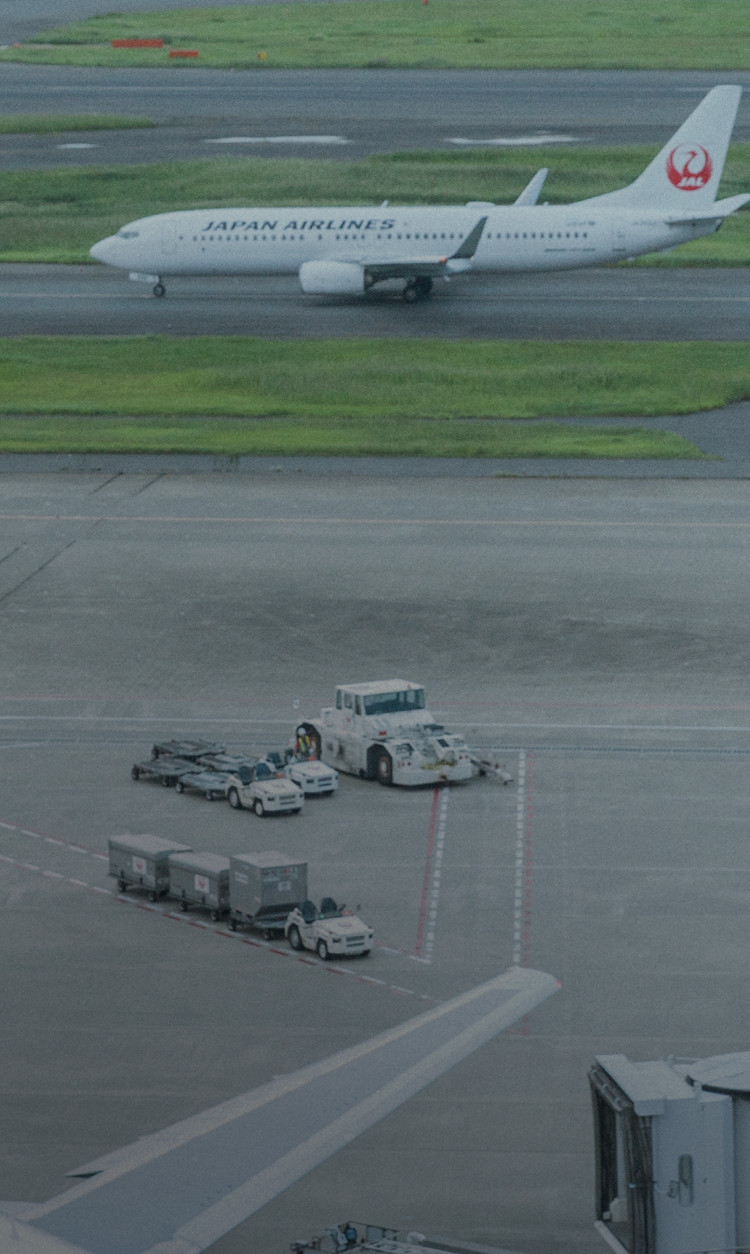
SCENE 02
THE DAY OF DEPARTURE
TO BOARDING TIME
Aligning our minds
to value the customers'
precious time
- Airport
Passenger
Service - Ground
handling - Maintenance
engineer - PILOT
- Cabin
attendants
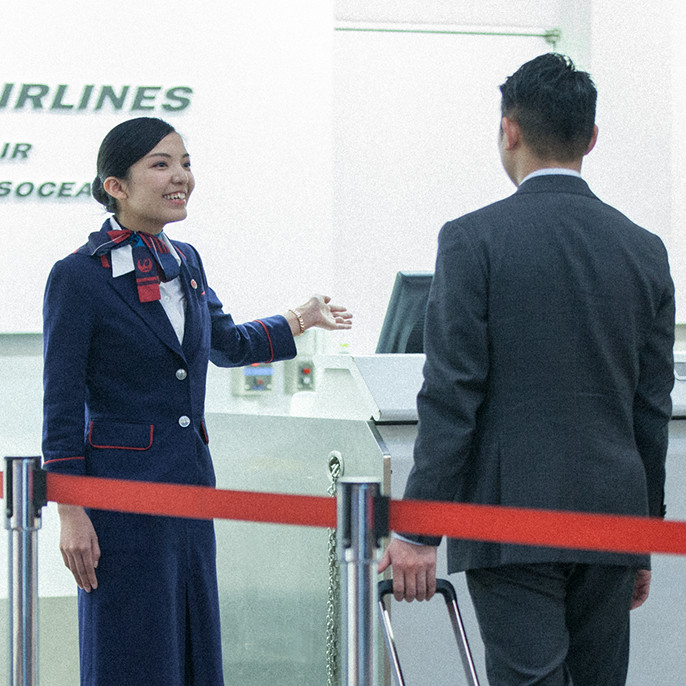
Ticketing counter
To avoid wasting the customer's precious time, we assign staff at the entrance of ticketing counters to determine whether the customer has to drop by the counter or can use Touch & Go and advise them where to go. As ticketing counters become congested when a flight is delayed or canceled, we distribute leaflets providing online procedures for obtaining refunds or rebooking, etc. to alleviate the customers' burden as much as possible.
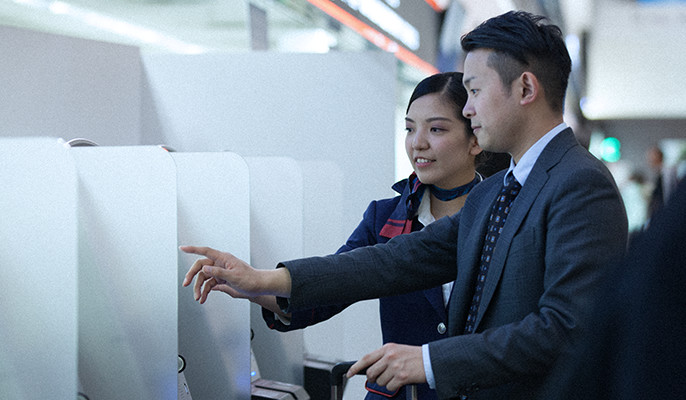
Check-in counter
We assist customers who are using a self-check-in machine for the first time or who are unfamiliar with one. We meet their needs so that they can check-in smoothly. We bear in mind to check the destination, boarding gate and boarding time together with the customer so that they board their flight smoothly.
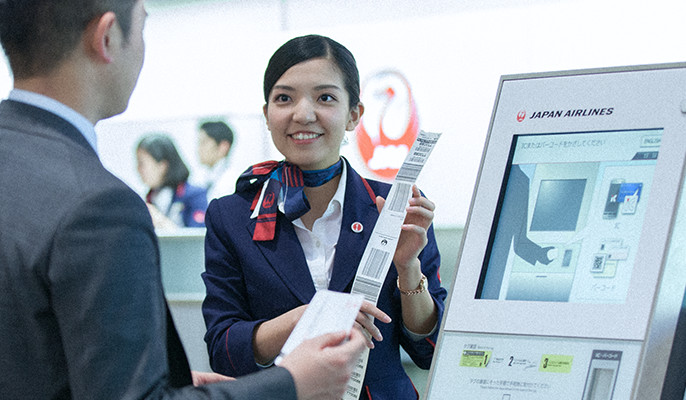
Baggage check-in counter
When checking the customers' baggage, we explain which security checkpoint is closest to their boarding gate in an easy-to-understand way so that they come to the boarding gate early. To ensure that flights depart on time, we proactively ask customers to use the JAL Express Tag Service, which shortens waiting time to check-in baggage, prioritize baggage of customers whose departure time is approaching, and so on.
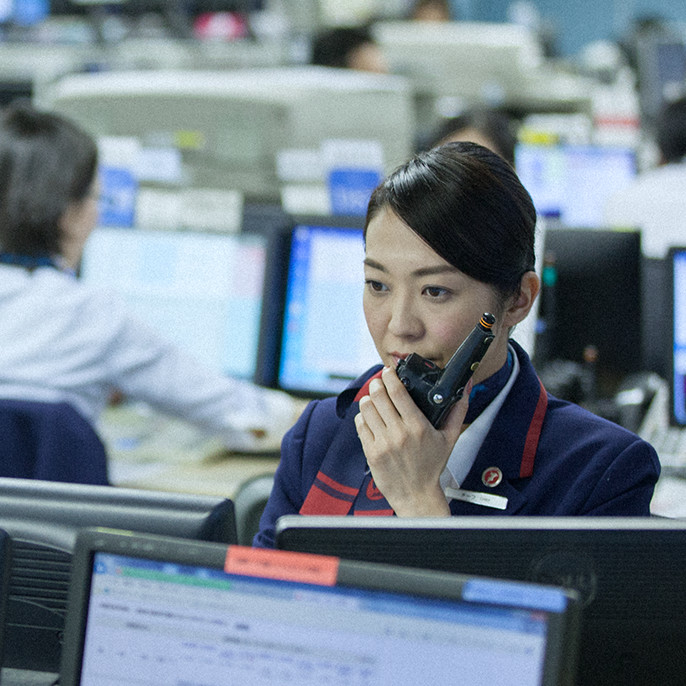
Desk
We control many flights each day to ensure on-time departures, particularly flights that are likely to be delayed and the last flight of the day which might violate the departure curfew. In case a flight arrives behind schedule, we strive to recover the delay, such as increasing workers while allocating time properly for safe preparations of the turnaround flight. As it may take time to load pets, large baggage, and baggage of passengers who show up late, we share information with the loading section in advance.
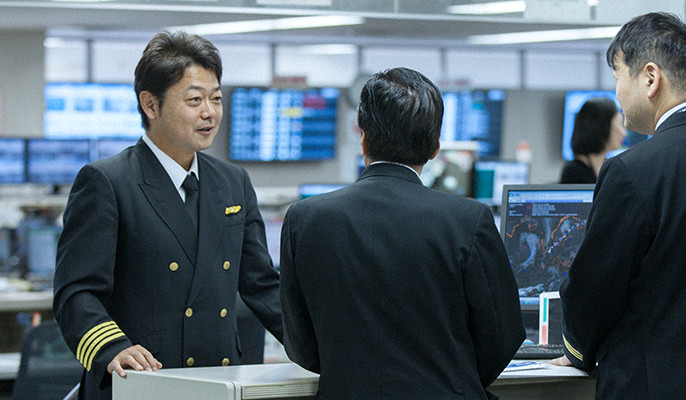
Dispatch briefing
The flight plan indicates flight time from the standard runway. We check the actual runway and share the optimal time to takeoff and land in order to achieve on-time operations. In case flight time is extended, we take into account the degree of congestion in the airport by time of day, which varies from airport to airport, and consider using a shorter distance of the runway at takeoff to shorten taxi time or changing cruising speed and altitude to shorten flight time, on the premise of assuring a safe flight.
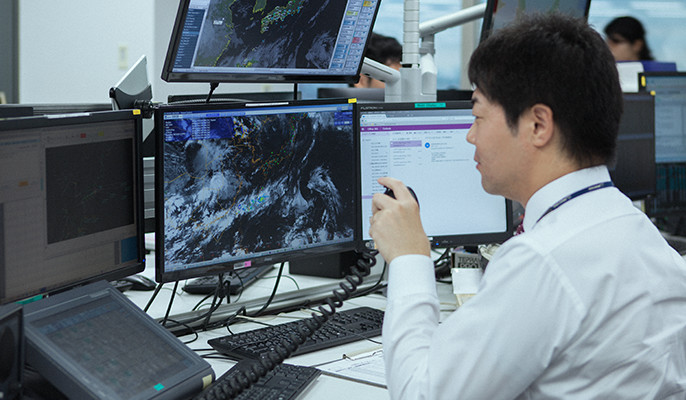
OCC
To minimize delays of ensuing flights when a flight is delayed, the Operations Control Center implements measures to contain the length of delays, such as replacing aircraft with other aircraft which have ample time in their schedules.

Load Control
When deciding cargo and baggage loading positions, we not only take into account the aircraft's center of gravity (C.G.), but also the order they are delivered to the aircraft in order to shorten loading time.
We swiftly gather relevant information and notify the Captain of the final C.G. and weight as quickly as possible so that the pilots can expedite pre-flight preparations.
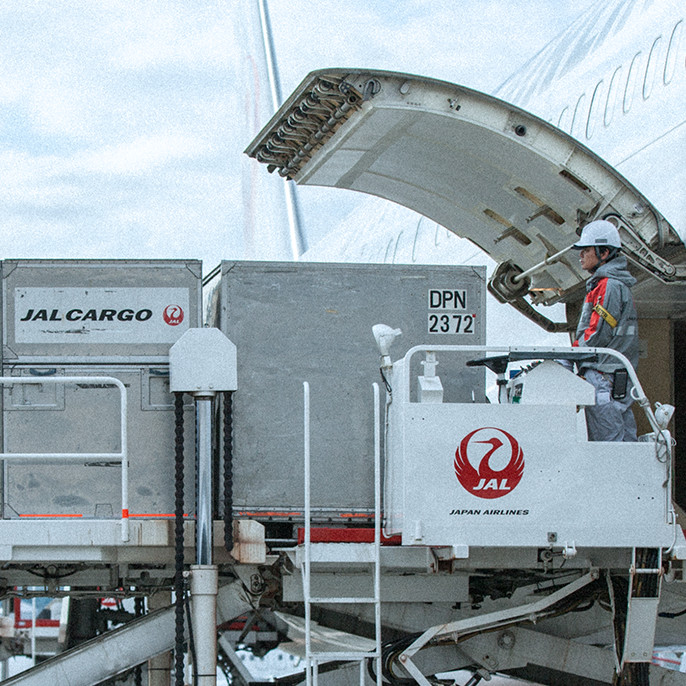
Baggage and
cargo loading
The Load Master (LM) judges frontline conditions which change minute-by-minute and supervises loading. When an irregularity occurs, the LM responds at once and maintains teamwork with related sections and all team members to ensure that the aircraft departs safely and on time. The LM checks the number of baggage belonging to passengers with connecting flights and which containers they are loaded in, and sorts the information in advance so that workers can smoothly handle flights with even short connection times.
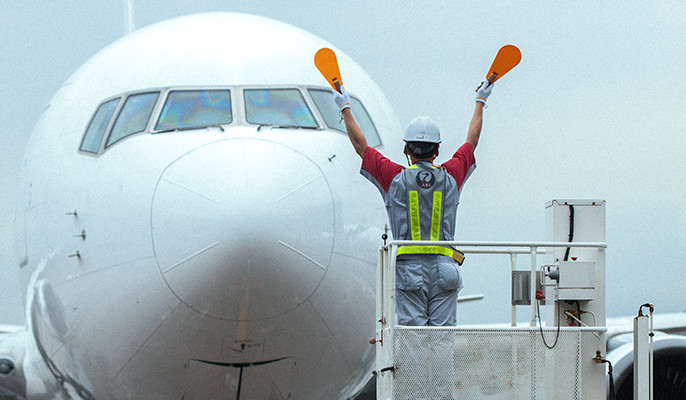
Marshaller
The marshaller makes sure the aircraft comes to a stop on the stop line so that the Passenger Boarding Bridge can be set to the aircraft smoothly.
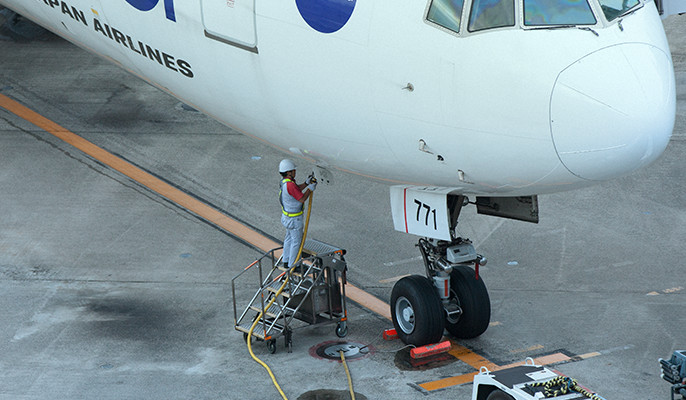
Electric power supply
Cables are prepared in advance to start work smoothly when an aircraft enters the parking spot.
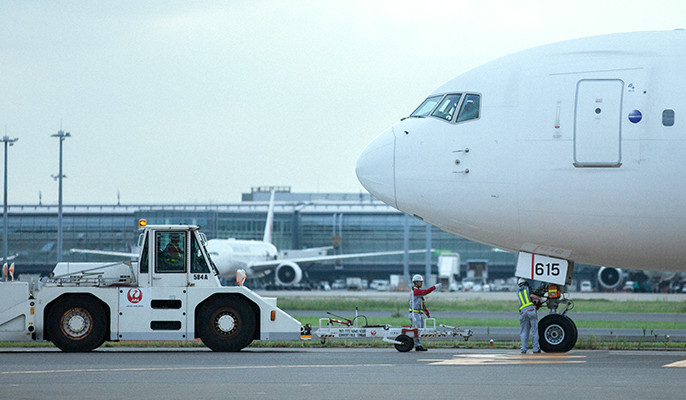
Push Back
Push Back is a difficult job, as it is easily affected by weather conditions. The driver pushes back the aircraft safely, while paying close attention and coordinating with mechanics and ground handling colleagues.
Catering
Meals are loaded into aircraft according to the type of aircraft and by innovating loading methods onto food trucks. Maximum care is taken to ensure that meals are handled safely and efficiently onboard. Placing top priority on safety and accuracy in any situation leads to on-time operations.
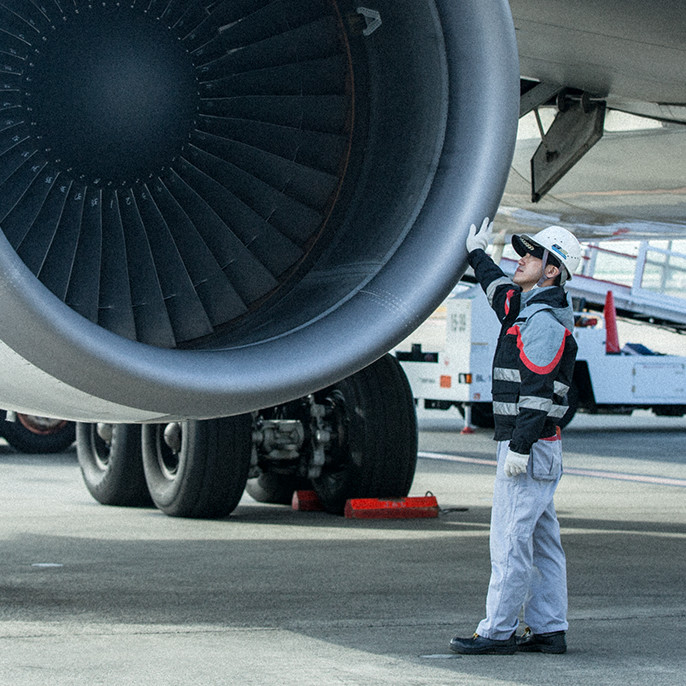
Line maintenance
To ensure on-time operations, line maintenance engineers envision key points in maintenance work before boarding an aircraft and perform maintenance with an awareness of the aircraft's next departure.
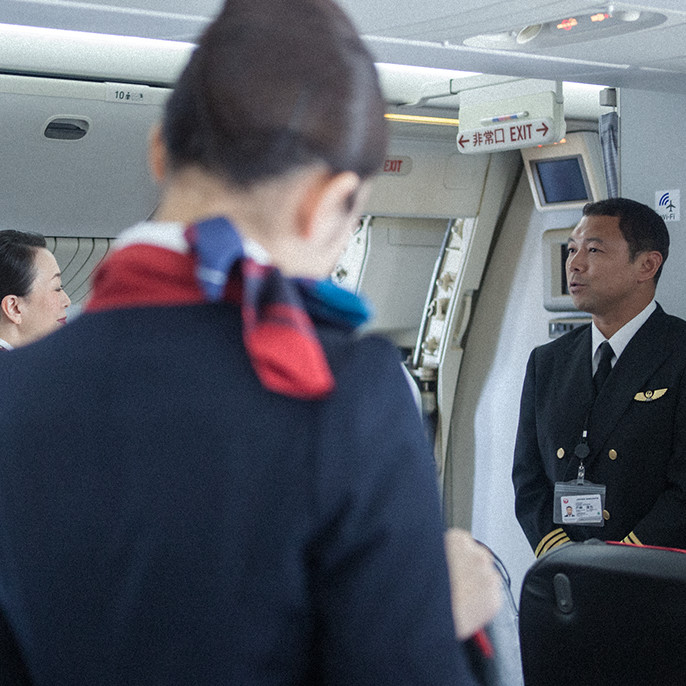
Briefing
Cabin attendants and pilots
Coordination between pilots and cabin attendants is essential in ensuring on-time operations. At pre-flight briefing, information is shared, mainly flight time, runways, and possible turbulence. They also share information on fluctuations in flight time depending on taxiing time and airport congestion, and discuss whether it is necessary to put forward boarding time in order to depart early or to complete takeoff preparations speedily. Even if takeoff time is specified by air traffic control, the order of takeoff can be moved up or the specified takeoff time may be canceled if takeoff preparations are completed early.
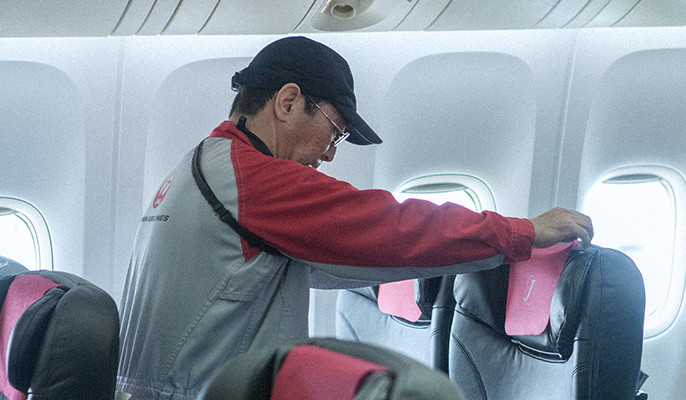
Cabin cleaning
To complete cabin cleaning in the limited amount of time, roles are assigned in each team and cleaning is performed effectively and efficiently. Inflight magazines, inside seat pockets and other items are checked and replaced as necessary so that the next passenger may enjoy a comfortable flight.
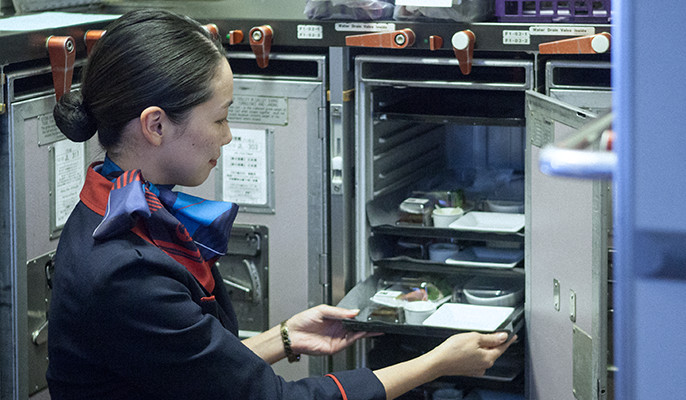
Loading of
cabin service goods
When loading of cabin service goods is completed, drinks, meals and cabin service goods are counted. Preparations are made carefully to provide each customer with the finest service.
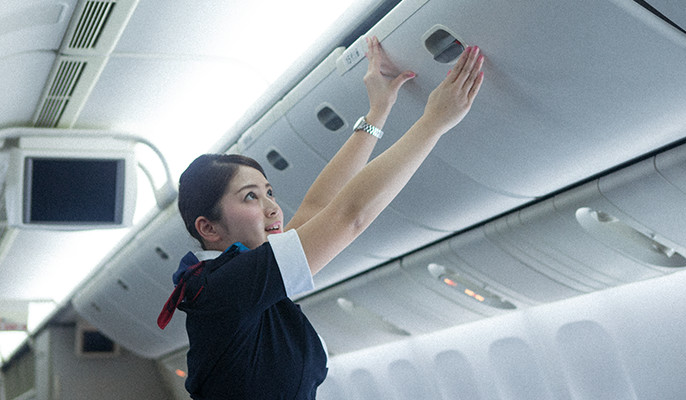
Stowing baggage
The cabin attendants check whether bags are safely stowed in overhead bins or under seats. They also check inside overhead bins to enable other passengers to stow their bags smoothly and to prevent bags from slipping out for the passengers' safety.
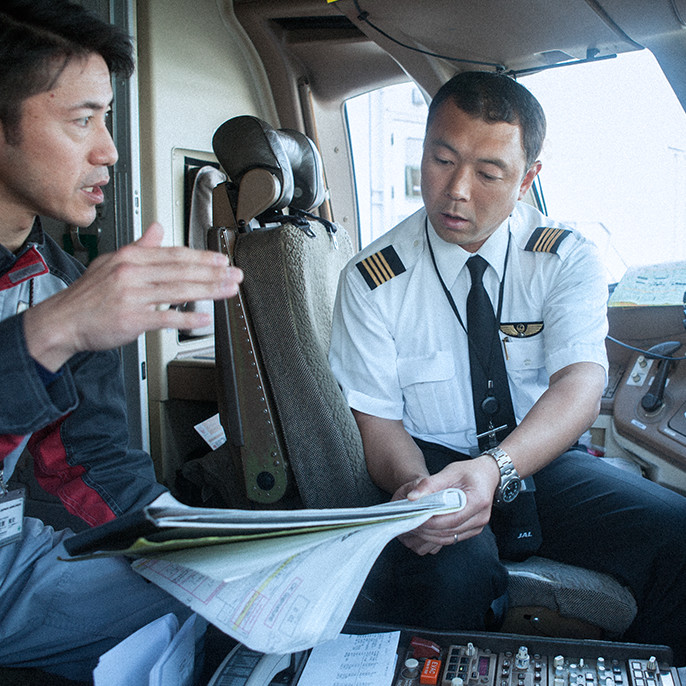
Briefing
Maintenance engineers and pilots
Checking the estimated completion time of refueling and maintenance service leads to the decision of boarding time. The number of passengers is shared as a standard for making departure and arrival preparations on the ground and building systems to achieve on-time operations.
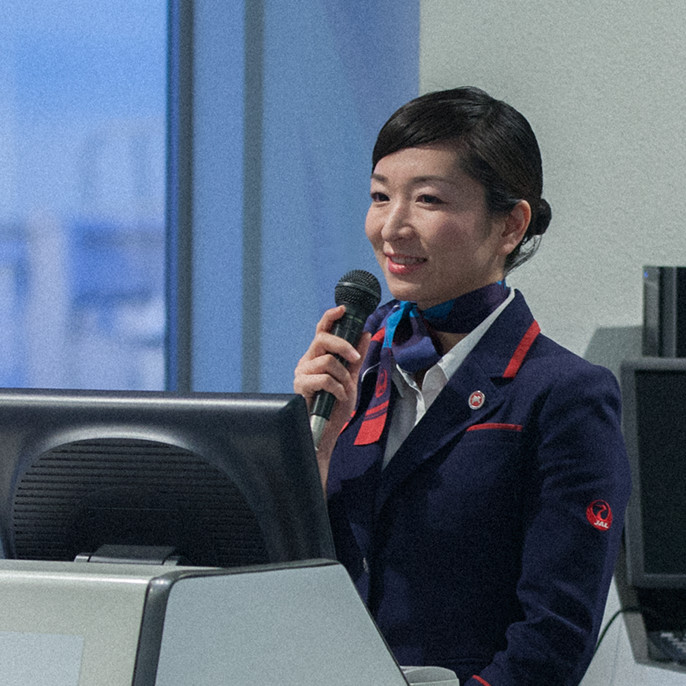
Boarding gate
Various measures are implemented to achieve on-time operations, such as adjusting boarding gates so that the departure time of flights at adjacent gates do not overlap or a boarding gate near the security checkpoint is assigned for large aircraft. To avoid congestion onboard aircraft, passengers are asked to board in a certain order and are called by announcements and by staff holding an information board in front of the boarding gate.
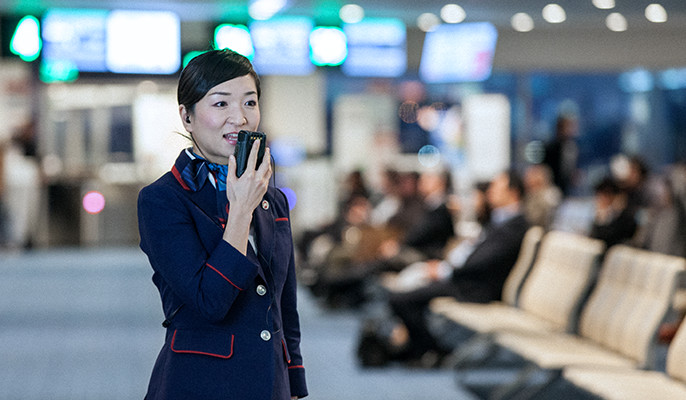
Guiding passengers
who board last
Staff search for passengers who have not shown up at the boarding gate on time based on information such as age or gender, while tracing the line of flow and calling out their names. They coordinate with staff of other boarding gates in case passengers might have mistaken their boarding gate.
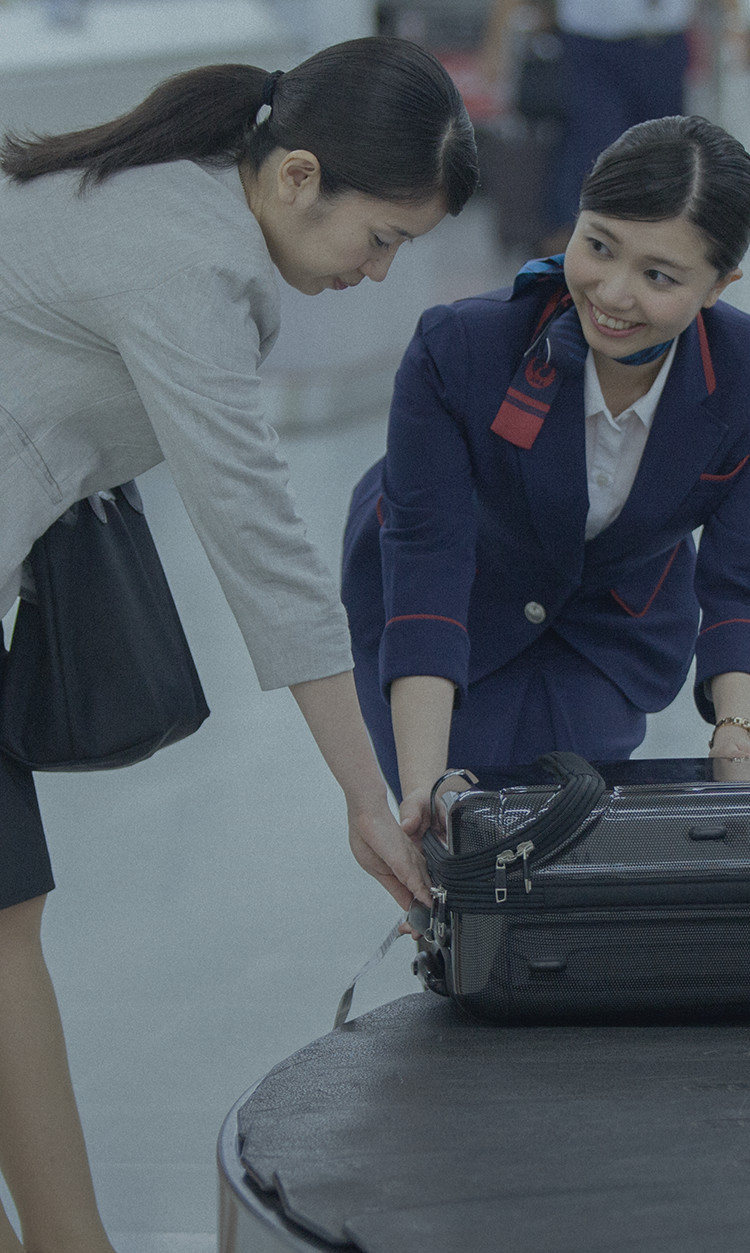
SCENE 03
AFTER DEPARTURE, CATCHING FLIGHTS
Passing the baton
to the next flight
airport
passengers service
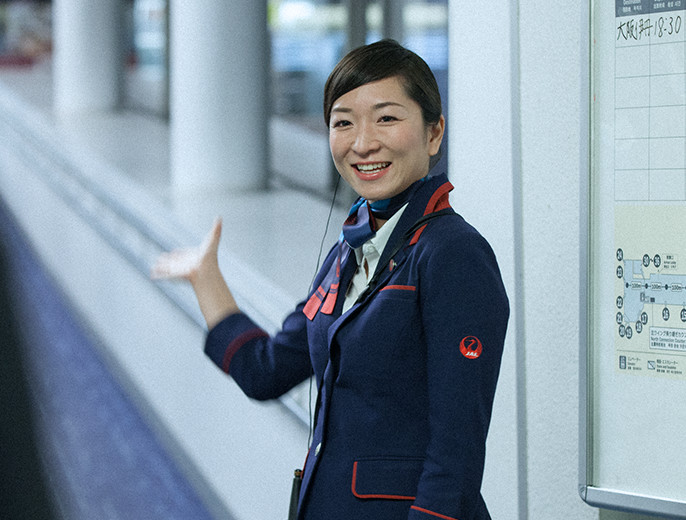
Information on
connecting flights
Customers with connecting flights are provided information through air-ground teamwork. Announcements on connecting flights are made onboard, and cabin attendants are asked to enable passengers with short connecting times to disembark quickly. After arrival, ground staff call the passengers' names at the arrival gate, tell them how to reach the boarding gate of their connecting flight, or prepare a car or bus for going directly to the next aircraft and escort them to the boarding gate.
